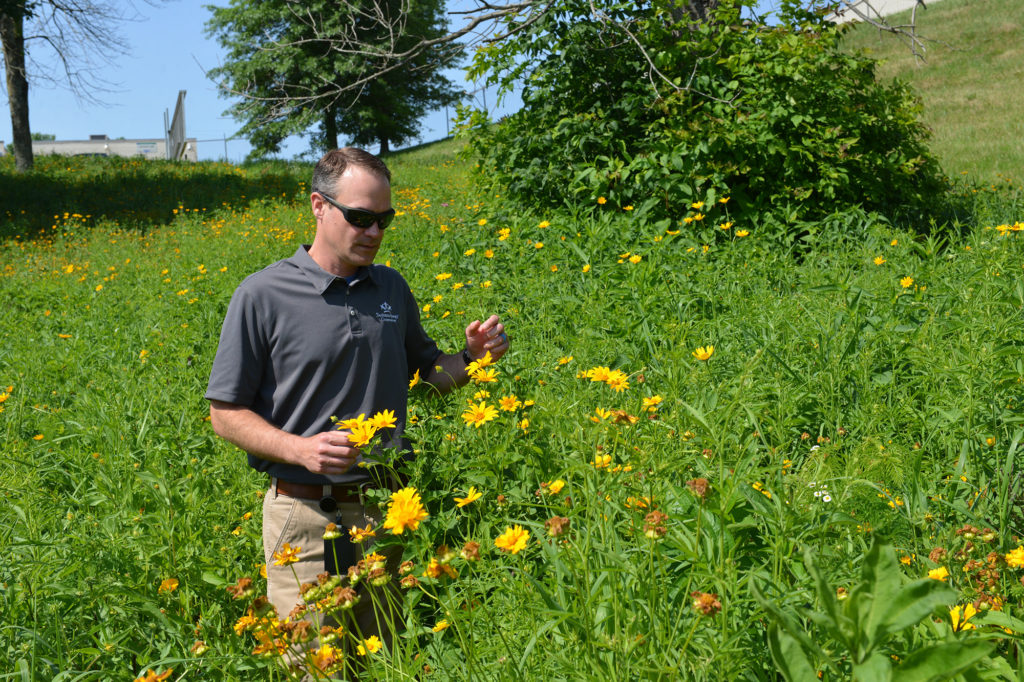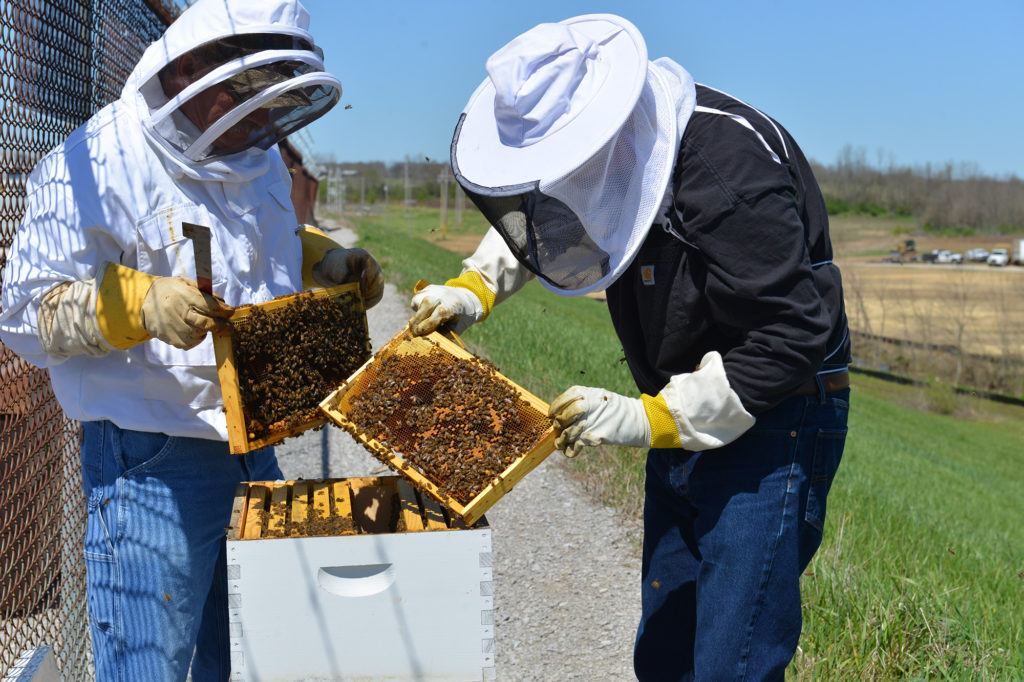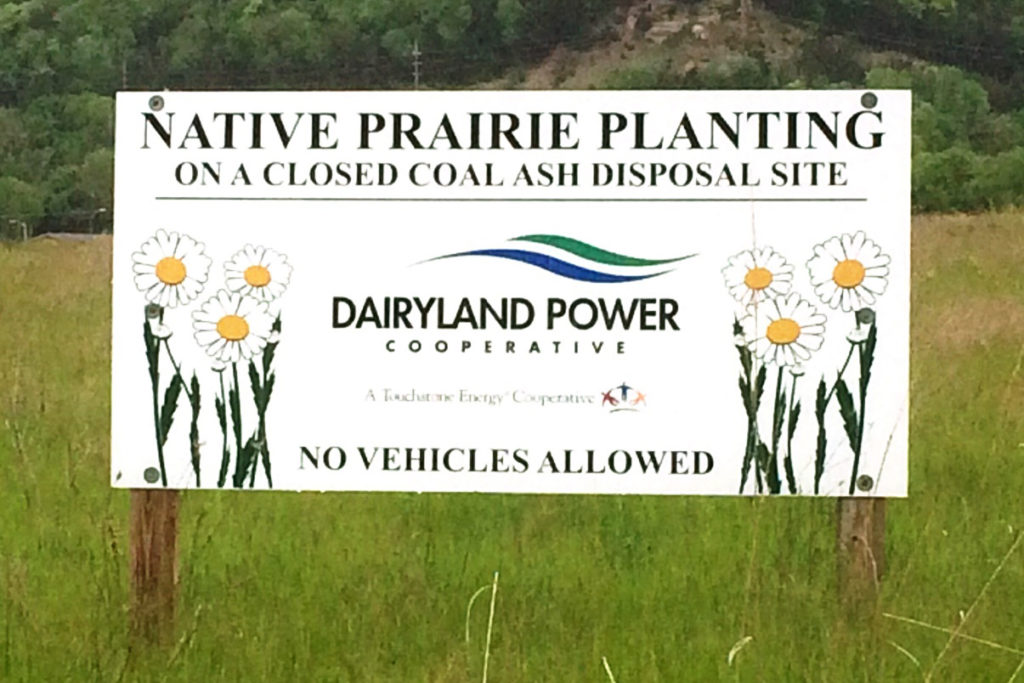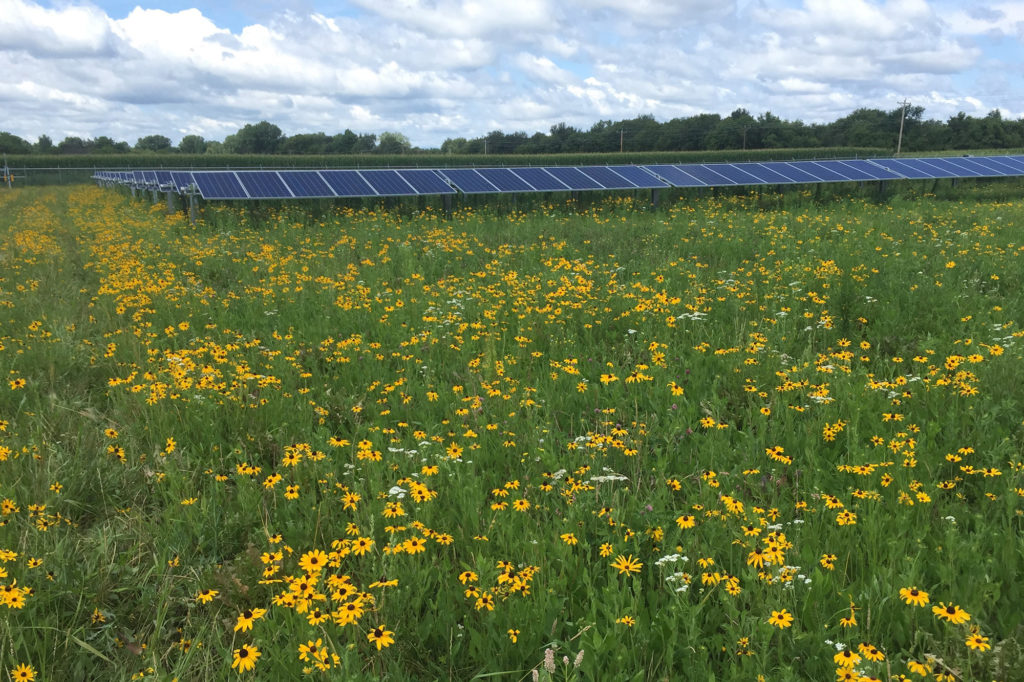
National Pollinator Week kicks off this year (June 18-24) amid talk that the federal government could designate the monarch butterfly, whose numbers have been in decline for decades, as endangered or threatened.
Electric cooperatives with territories that overlap critical monarch breeding areas and migration routes are devoting land and labor to reverse the decline of this and other key pollinator species.
East Kentucky Power Cooperative is building a 1.7-acre monarch waystation at its Winchester, Kentucky, headquarters to grow milkweed, black-eyed Susans and other native flowers where the butterflies can lay their eggs and rest on the long flights to and from their overwintering grounds in Mexico.
“We’re developing a monarch waystation to help,” said Chris Carpenter, a biologist at EKPC. “If monarchs are listed, that could significantly affect us.”
The habitat, adjacent to a 60-acre solar farm that went online in November, is also home to four hives of 25,000 honeybees, which, while not a native species, are key pollinators.
Members who tour the co-op campus “like the fact that we are helping out species that are pollinators and plants that are native,” said Josh Young, EKPC’s natural resource and environmental compliance supervisor.
EKPC is also looking into developing pollinator plots at its H.L. Spurlock Station, a coal-based plant, and Bluegrass Station, a natural gas plant.

Dairyland Power Cooperative, in La Crosse, Wisconsin, first caught the pollinator preservation bug in 1994 when it prepared to cover a closed 40-acre coal ash landfill near a power plant. General practice at the time was to plant grasses, but the co-op expanded that to native prairie of grasses and pollinator plants.
The G&T is developing large plots at all 18 of its solar farms to host monarch butterflies, bees and other pollinators. The combined 250 acres of habitat contain a diverse mix of milkweed, black-eyed Susans, sunflowers, lupine, cornflowers, forbs and other species. Fifteen sites are already up and running.

Brad Foss, Dairyland senior environmental biologist, said efforts to sustain the monarch butterfly have “ramped up in the last few years, with the plight of pollinators” becoming more known. The rusty patched bumble bee, a Wisconsin native, was listed as “endangered” by the U.S. Fish & Wildlife Service in January 2017.
Dairyland recently planted two pollinator plots of 1.5 to 2.5 acres and identified a 3-acre site in Minnesota. Plans include interpretive walking trails and information kiosks about the benefits of pollinators and the plant species.
The co-op is also working with the Mississippi Valley Conservancy on an 8-acre bluff within a conservation easement to remove invasive species and return the land to native plants, including pollinator species.
“We want to develop high-profile sites, such as those located by subdivisions, for pollinator signage to educate the public on what we are doing and why we’re doing it,” said Foss.

NRECA is also getting involved, partnering with the Energy Resources Center at the University of Illinois-Chicago to develop a voluntary conservation agreement to aid the monarch butterfly population along utility and transportation rights of way. The partnership involves 24 organizations with pollinator projects across 1.8 million acres in 45 states.
The Fish and Wildlife Service has recognized such conservation agreements as regulatory mechanisms to encourage non-federal landowners and managers to adopt practices that help pollinators. As a representative for the gas and electric sector, NRECA will provide comments on draft documents and key elements that should be incorporated into the agreement, including what types of utility activities should be covered.
Cathy Cash is a staff writer at NRECA.